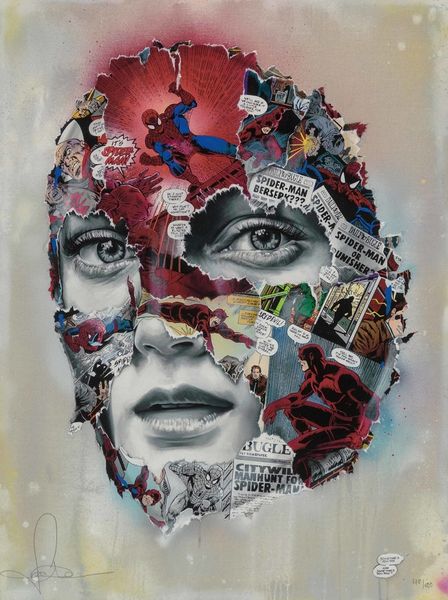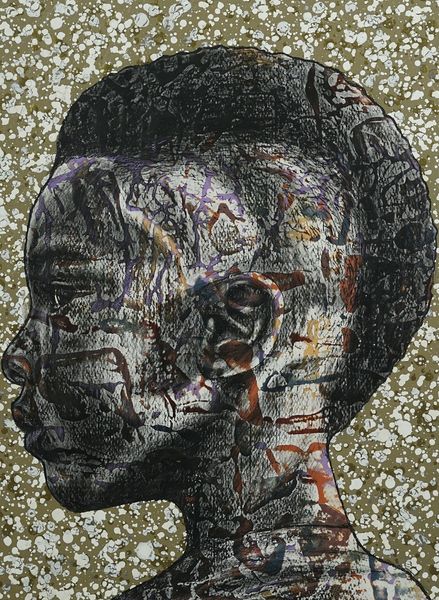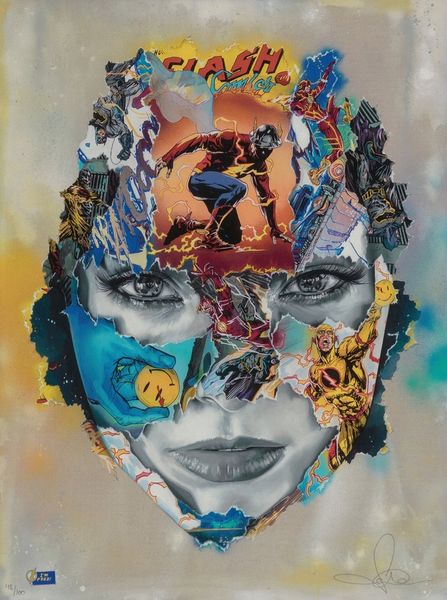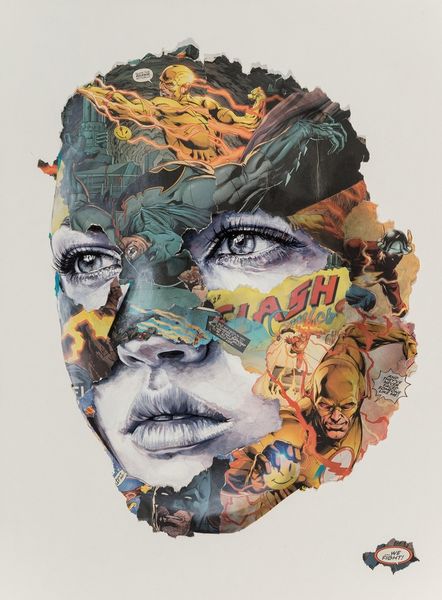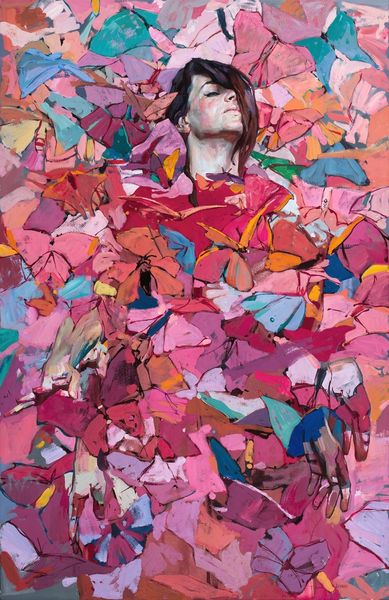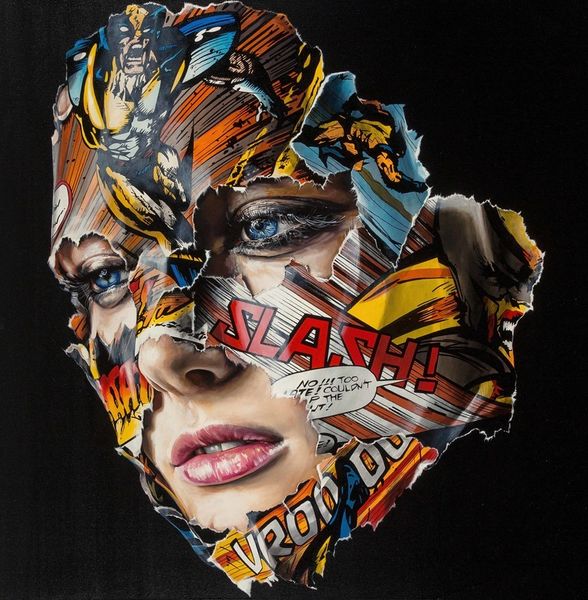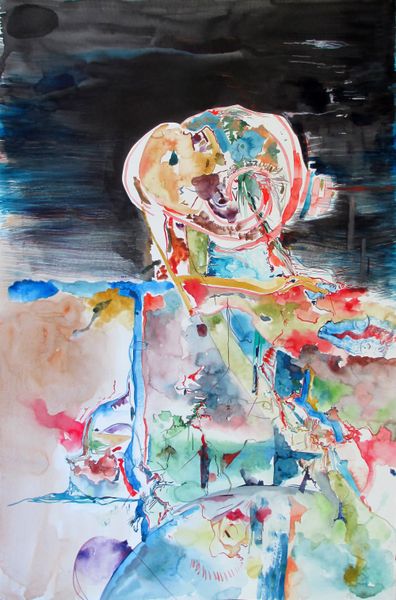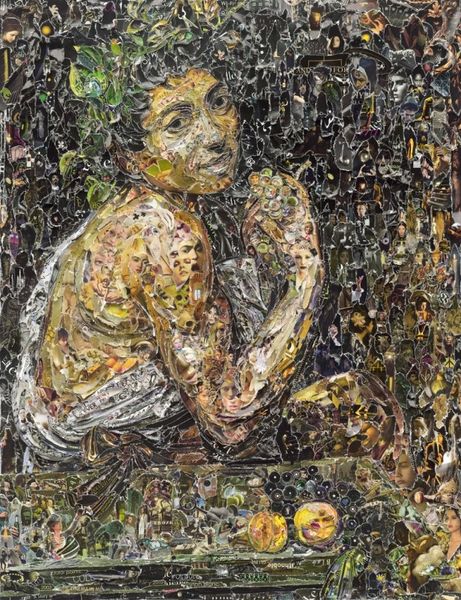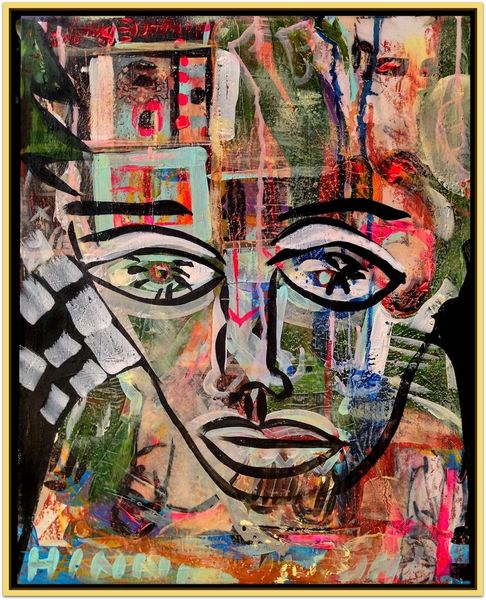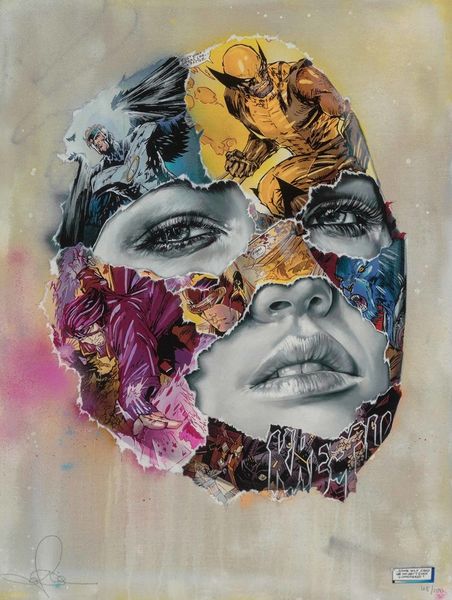
Copyright: Modern Artists: Artvee
Curator: Sandra Chevrier’s 2022 piece, "La Cage chromatique," blends acrylic and mixed media into a compelling matter-painting on canvas. The composition immediately struck me; those piercing eyes set against that vibrant, almost violently colorful facade... what's your take? Editor: It feels…suffocating. All those layers, that build-up of paint—it’s like a mask, or maybe a cage, as the title suggests, built of pure color. A beautiful cage, admittedly, but a cage nonetheless. How does it sit within Chevrier’s broader commentary on contemporary portraiture and societal expectations, in your view? Curator: Precisely! Chevrier, in pieces like this one, frequently juxtaposes the hyper-realistic painted faces of women with comic book fragments, or other elements. "La Cage chromatique" diverges from that practice, moving into matter painting; building a literal *mask* over a woman's face by collaging together thousands of globs of color. These vivid marks act as an obstacle to our gaze, making visible that push and pull between hiding and revealing. I read her work as commentary on the limitations imposed upon women; but also how women construct elaborate disguises in order to subvert restrictive beauty standards. What is that saying...? "I must create a system, or be enslaved by another man's." Editor: Right. And that notion of the mask resonates deeply with art history. From ancient rituals to contemporary performance, the mask represents transformation, concealment, power... and in this case, perhaps a form of resistance. But how does the "pop art" element play in this scenario, considering the contemporary themes of female identity that Chevrier explores? Curator: I believe she invokes a pop sensibility only to subvert its core appeal. In terms of production and access, pop art aspires for the rapid production and democratized reach of art. And yet, "La Cage Chromatique" doesn't make this claim. By building layer upon layer of unique marks, Sandra is in fact building an exclusive artifact, resistant to rapid consumption and commercialization. Editor: So, not a celebration, but more like a critical adaptation. That's an interesting reading, particularly in today’s climate, saturated as we are with digitally manufactured images. Curator: It really forces us to confront what we value—authenticity, perhaps, versus manufactured perfection? Something to meditate on. Editor: Definitely gives you pause. The kind of work that stays with you, and probably changes with you each time you see it.
Comments
No comments
Be the first to comment and join the conversation on the ultimate creative platform.
